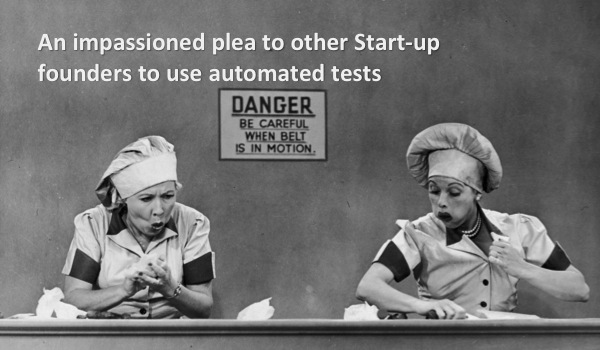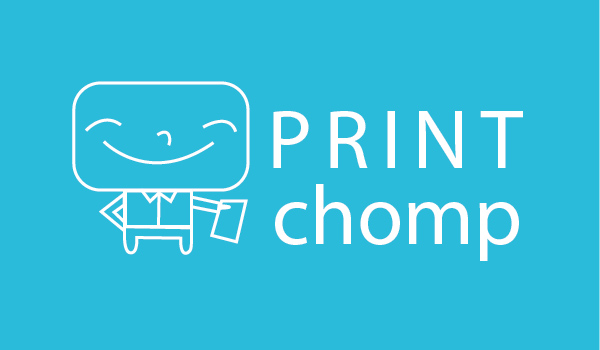Marketing Automation is becoming a premium for small and large organizations. Over the past 15 years there has been increased pressure to squeeze the most one can out of their marketing dollars. Typically this falls into two camps, the actual money spent on marketing initiatives and the money spent towards the headcount to administer them. The marketing automation dilemma You essentially have a back and forth issue. You don’t want to strip headcount too badly, because it will be difficult to administer campaigns, but you want to maximize the amount you spend on external campaigns that drive people back to your site and drive interest. The first step to solving this dilemma So now you recognize you have this dilemma and the question of how to make strides to maximizing my headcount and at the same time spend money on initiatives that will drive revenue, retention, sign-ups or whatever your key success metrics are. What are the next steps? Strip away non-value additive activities via automation Busy work is the bane of anyone’s existence, but it should also be the first thing in your organization you look to remedy. Physically handling mailing items, stuffing envelopes, or even spending the time managing 3rd parties to do this isn’t additive. In many cases manual interactions not only increase the time that you spend doing other things, but also increase the chance of errors. The irony of introducing more manual work is that it introduces more errors that may require further work to manage. At the end of the day, outsourcing these operations to a 3rd party is crucial to improve efficiency. It improves efficiency for a number of reasons: You won’t ever be able to do something as effectively as a specialized shop – Typically if you are printing and stuffing envelopes, your cost per impression is much higher than a 3rd party shop. You have to consider the time for anyone babysitting the exercise of printing and mailing Print on demand vs. Inventory – One of the essential problems with all in house marketing activities is that you have to print extra and warehouse those extra pieces. Initiate from your systems rather than a spreadsheet – If you have systems for managing people and operations, then why are you exporting to a spreadsheet and manually hand holding the process to completion. It wastes time, while you could automate the entire process. Enter a Print & Mail API A print and mail API is the perfect solution to move manual tasks off of the plate of marketers and just making sure things “happen” on their own automatically. There are many marketing professionals that...
Read MoreJoseph sits down with Jeremy Bell to discuss Teehan and Lax, Design, his startup Wattage and the future of the consumer electronics industry. It was interesting getting his perspective on Teehan given that he was a partner with the firm for 6 years.
Read MoreAs our team gets closer to launching our latest start-up, I wish to pass on a piece of advice that has been a tough lesson for me to learn. Working on the business side of the shop, I have fought against automated tests for a while. That all changed recently. My epiphany came after dealing with a few problems, doing some research and receiving sage advice from multiple people while working on Printchomp. The conclusion I reached was that automated tests save developers time and let you deliver more. This was a painful admission, but a correct one. Let me explain further as to how I came to this realization: 1. Time it takes to do QA (Quality Assurance) without automated tests – I have been in multiple start-ups where automated tests didn’t exist, and let me just say the QA overhead was astronomical. Every time a new feature was rolled out we would have to check the code in multiple browsers in painstaking detail to see if a user could still make it through the checkout process. Due to the fact that basic testing flows weren’t in place, we would waste countless hours every time a new change or feature was introduced. 2. It keeps the locus of control of the QA process closer to developers – I have advocated for a long time that there needs to be closer ownership of code by developers themselves. I have seen many instances where code was checked carelessly, and then tossed over the fence for the QA and business folks to find and fix the errors. With automated testing, developers can run more localized testing and make quick fixes that don’t involve monopolizing QA. Running unit tests ahead of code check-ins are an invaluable step to save headaches later and reduce stress between stakeholders. 3. You build faster – While it seems counter-intuitive, building tests saves you time in the long run. The knee jerk reaction is to spend your time building new features. I have had this reaction many times, but I realized I needed to change it. The best way, I think, is to think of your product as the Starship Enterprise. Scotty, an engineer, can only check so many things at once. An automated test multiplies the ability of Scotty to diagnose and test multiple things. As Captain Kirk, your goal is to keep the Enterprise going forward. Something as simple as automated testing can keep you going at light-speed. One of the biggest time sinks in development is finding the problem. With proper tests in place you can isolate and figure out where the issue is. 4. Ramps up training of new developers – With automated tests in place, it is easier for new developers coming into the system to understand code that they didn’t write. There is no one, probably not even your CTO, that...
Read MoreWarning! This doesn’t apply to everyone who has tried to pitch me a story, but enough for me to write this blog post. Please don’t jump all over my head thinking that I am referring to you. When I started off as a part-time rogue blogger, I found it easy to write on things I found interesting. As the regularity and velocity of my blogging picked up, I found an interesting trend emerge. I now get a regular steady beat of requests to write about their start-up or a weird obscure thing going on in their company. Now don’t get me wrong,I come across a few real gems and legitimately interesting things going on. However, I drill down a bit further on why many of these companies are so actively seeking coverage (especially the ones that I find a bit dubious) and have found an alarming, but not surprising trend. Many of these companies are using coverage to mask the fact that their company has significant holes in it. It could be that their business is a “me too” company or that they are not nearly as far along as they claim to be, or even that the number of active users they have on their system just isn’t really interesting. Let me set the record straight: as a marketer, going after coverage is a perfectly acceptable and smart way to help advance the goals of your start-up. I am in the process of launching my own start-up right now (Printchomp – shameless plug alert) and PR will be a corner stone of driving user sign-ups and interest in the company. That said, if you are no where close to achieving product-market fit, your User Experience absolutely sucks or you’re a shameless knockoff of another site, maybe you don’t want to be pushing so hard for coverage. Even if all those items are fixed, you also have to make sure you have a compelling reason to actively pursue coverage. A veiled excuse to get backlinks from a major tech blog isn’t enough in my opinion. So before you send out an article request to piss off yet another tech journalist, ask yourself a key question. If you receive coverage, will it materially fix any of the day to day problems your start-up faces? It is like using wallpaper for structural support in a building. It looks nice, but it won’t keep your house from falling...
Read MoreAs some of you already know, I have been working on a new start-up. I spent two weeks on the high seas back in February contemplating my next move after leaving my last venture. It was very liberating to sit with a blank piece of paper and a pencil and scribble ideas. While the ocean went by I would sit for an hour or two a day and come up with ideas, business problems or other problems that need to be addressed. In the following month, I took all of my ideas and started evaluating them in more detail. I came to the one conclusion: the customized goods space is under serviced on the internet. It is still nearly impossible to do good comparison shopping for competitive goods or to order them in an easy fashion. The first industry vertical we will be building this service out for is the print industry, hence our name “Printchomp”. We just got back from TechCrunch Disrupt in New York where we have begun to share what we are doing. I even got to share a beer up on stage with Michael Arrington and MG, what a cool way to start a company. Meet our Mascot! For the time being, we are calling our mascot Chomp! He is the master of ceremonies for all Printchomp related activities and was created by our awesome Art Director – Alysha Puopolo Now onto business! We hope to be launching V 1.0 of Printchomp for this September and encourage you to sign-up at our website www.printchomp.com to get the latest news as we prepare for launch. Recruiting! We are looking for the best and brightest in talent to help build out our team. Declan Whelan, our tech virtuoso, is looking for some awesome tech talent to join our elite force of coders. If you want in on the ground floor of this kick-ass bootstrap start-up and have the skills to pay the bills email me at joseph (at) Printchomp (dot) com. We aren’t just looking for tech talent. If you have other skills that you think will help us, please let us know. We need your help! We recognize we are only as strong as our users. We need your help! If you want to help us please do the following 3 things 1. Like us on Facebook 2. Follow us on Twitter Follow @printchomp 3. Sign-up for our updates – Sign up here...
Read MoreHere I sit, in an airplane on the tarmac of Miami International Airport. Our flight home should have left the ground over an hour ago. My wife is next to me, just about ready to climb out and start pushing the plane herself. I am annoyed and frustrated, and anxious to be winging our way back home. With any luck, we will be in the air by the time I finish this post and I can deride a company for the first time while at 30 000 ft. altitude. We almost never fly American Airlines (mostly because of my addiction to Star Alliance’s customer loyalty program!), but this flight was booked for us by our cruise line, leaving us little choice in the matter. However, I will not be returning to American Airlines anytime in the near future, and I’d like to outline why. We just finished a lovely 10-day cruise and headed to Miami International Airport. We were already rather annoyed by the fact that our flight would not be leaving for 7 hours after our transfer from the ship arrived at MIA (although this is not the fault of AA, but rather poor scheduling by the cruise line), but we decided to make the best of it. Both my wife and I were quite anxious to get home to our lovely daughter. Take-off time couldn’t come soon enough! Our headaches began in the check-in line. Firstly, it was woefully understaffed by probably the surliest group of individuals I have ever met. It was as if I just met the 7 dwarves, except they were all named Grumpy. I went to ask them some basic questions, only to be shuttled back and forth as they decided whose responsibility it was to answer my basic question. Instead of just answering us about check-in details, we were throttled about like a bloody ping-pong ball from line to line. The net result? Sitting in lines with our luggage for another 2 hours before we could check-in. Once we actually got to the Express Check-in, we were greeted by the unfriendliest piece of software that I have ever seen. Rather than taking the pieces of information that were already entered into the system, they required us to manually re-enter everything. Having just read the Steve Jobs book, and being captivated by his attention to detail and user experience, I could only imagine what his reaction to this system would have been. After 2 attempts and 10 minutes we finally got our boarding passes. (Oh wait, looks like we are about to take off) Next we were off to the lounge to wait...
Read More



